Stadio Diego Armando Maradona (Stadio San Paolo)
| Capacity | 54 732 |
|---|---|
| 330 (Press seats) | |
| Country | Italy |
| City | Naples |
| Clubs | SSC Napoli |
| Floodlights | 900 lux |
| Inauguration | 1959 |
| Construction | 1948-1959 |
| Renovations | 1979, 1989, 2010, 2018-2019 |
| Address | Pizzale Vincenzo Tecchio, 80125 Napoli |
Advertisement
Stadio Diego Armando Maradona – stadium description
Why was construction of Stadio Diego Armando Maradona decided upon?
After the bombing of the Stadio Partenopeo in 1942, the players moved to the Stadio del Vomero. However, the limited capacity of that facility could not accommodate the tens of thousands of fans who regularly filled the stands—often exceeding the allowed capacity and causing public order problems.
City authorities decided to build a new stadium in the Fuorigrotta district, which at that time was undergoing intense urban development. The project was entrusted to architect Carlo Cocchia, who initially proposed a single-tier structure. The design later evolved into a stadium with two tiers, with the lower tier sunken below street level.
The cornerstone was laid on April 27, 1952, in the presence of Naples’ mayor Domenico Moscati and the then Prime Minister Alcide De Gasperi. Two years later, in September 1954, a scale model of the stadium was presented—this time with the new mayor and Napoli’s president, Achille Lauro, as well as Prime Minister Mario Scelba in attendance.
What was construction of Stadio Diego Armando Maradona like?
The stadium’s construction lasted a little over seven years and was carried out by the technical services of Genio Civile, with several changes introduced during the process. The facility was handed over to city authorities on December 2, 1959. The first director of the stadium became Attila Sallustro, the legendary interwar striker of Napoli.
The official inauguration took place four days later—on December 6, 1959—during a Serie A match between Napoli and Juventus, which ended with a 2–1 home victory. At opening, the stadium had a capacity of 90,000 standing places. It consisted of two tiers of stands, and travertine seating surrounded the pitch and a six-laned athletic track made of tennisolite material.
Initially named Stadio Partenopeo, and during construction referred to as Stadio dei Centomila (Stadium of 100,000, just like Stadio Olimpico), it was officially christened Stadio del Sole (Stadium of the Sun) at its opening. In 1963, it was renamed Stadio San Paolo, referencing the tradition according to which Saint Paul of Tarsus had come to Italy by passing through what is now Fuorigrotta. In the same year, the stadium hosted the opening and closing ceremonies, as well as athletics events and the final of the football tournament during the IV Mediterranean Games.
What was modernization of Stadio Maradona like for Euro 1980 and 1990 World Cup?
Ahead of the 1980 European Championship, the stadium underwent modernization costing 1 billion lire. The upgrades included strengthening the lighting system—which had been inadequate since the opening—building a two-tiered structure near the numbered stand (today’s Posillipo stand), and installing a light clock and scoreboard at the junction of the Distinti and Curva A stands.
In 1985, Napoli—driven by massive fan interest after Diego Maradona’s arrival—unsuccessfully sought permission to add a third tier to increase capacity to 100,000 spectators.
However, in 1984, FIFA granted Italy the hosting rights for the 1990 World Cup. Although Napoli’s president Corrado Ferlaino initially planned to build a completely new private stadium for 150,000 in Casoria, in the end Stadio San Paolo was chosen to represent Naples in the tournament—despite existing structural problems.
Accordingly, a thorough reconstruction began in 1988, concluding just before the World Cup, in May 1990. During construction—amid enthusiastic fans—nearby buildings experienced tremors akin to earthquakes.
The scope of work was broad: a new roof and press stand designed by engineer Luigi Corradi were constructed; two lifts were installed leading to the press stand, above which a Dirigibile
(airship structure) for commentators and TV staff was added. They also modernized the building by the main stand, installed seats in all sections, refurbished the athletic track and lighting, replaced the old scoreboard with two new screens, rebuilt entrances, created a multi-level underground parking, and upgraded facilities to meet FIFA safety requirements.
Final work completed only in 1991, after the World Cup had ended, provoking the dissatisfaction of Naples’s officials—the team had to play European Cup matches in a stadium with limited capacity.
After the tournament, a third tier was completed, joined structurally to the roof, raising capacity to 72,810 seated. They also installed sector barriers and reorganized stairways in the Curva.
Why did reconstruction at Stadio Maradona continue in subsequent years?
Despite recent renovations, the stadium started exhibiting structural issues as early as 1995. Then, the supervisory commission temporarily revoked its suitability for use, recommending repairs. Meanwhile, the scoreboards ceased functioning halfway through the 1993/94 season.
Its usability was again withdrawn in September 2001 after major storms. The stadium’s structure was particularly damaged, forcing Napoli to play home matches first at Stadio Simonetta Lamberti in Cava de’ Tirreni, then at Stadio Santa Colomba in Benevento. Only in January 2002—after extensive repairs made possible under a declared state of emergency—could the team return to San Paolo.
The main unresolved issue remained an inadequate Sant’Antonio drainage collector and the problematic location of the stadium in the lowest point of Fuorigrotta, where water runs off from nearby Monte Sant’Angelo elevations.
During this period, the third tier was also closed, because fan-induced vibrations transmitted through the roof’s pillars into the ground, affecting nearby buildings. With its closure, the approved capacity was reduced to 60,240.
In July 2008, after Napoli returned to European competitions, further upgrades were implemented: external access rings were installed, new Italian and English signage appeared at main entrances, the press room was expanded, and roof maintenance was carried out.
How did Stadio Maradona change visually between 2010 and 2019?
In summer 2010, Napoli and city officials carried out the first modernizations, which included replacing the turf, irrigation, drainage, and rainwater runoff systems, as well as refurbishing selected stands.
A year later, in summer 2011, the stadium was adapted to UEFA requirements due to Napoli’s participation in European cups: guest-sector protective nets were removed, and the press stand was modernized.
In November 2012, two new 16‑metre LED screens were installed, replacing previously broken displays. In summer 2013, also on UEFA’s mandate, toilets were renovated, the turf refreshed, and lighting improved. On October 8, 2013, the press stand was named after Carlo Iuliano—a long-time SSC Napoli press officer who passed away that year.
In July 2015, Napoli presented a comprehensive redevelopment project by architect Gino Zavanelle—designer of modern stadium concepts in Italy and judge at Stadium of the Year. The plan included removing the athletic track, constructing a new stand to bring Distinti superiore closer to the pitch, installing skyboxes around the former track, adding new functional spaces around the stadium, and extending the roof. The city, however, rejected the proposal.
After Naples was awarded the right to host the XXX Universiade, the stadium underwent a comprehensive restyling in summer 2019: all stands were refurbished, the track renewed, two large-format screens installed, and locker rooms, audio systems, and lighting upgraded. The distance between seats was reduced, seat dimensions changed, and space needed for new screens decreased capacity to 54,732 seated.
How and when did stadium receive its current name in 2020?
On November 26, 2020—one day after Diego Armando Maradona’s death—the then Mayor of Naples, Luigi De Magistris, announced the initiation of the process to rename the stadium in honor of the legendary Napoli captain. Just eight days later, on December 4, the City Council approved the name change. The following day, the prefect of Naples validated the name officially as Stadio Diego Armando Maradona.
In December of that same year, 1,400 new seats were installed in the Distinti stand, arranged to spell out NAPOLI
when viewed from the stands.
Exactly one year after Maradona’s death—on November 25, 2021—a bronze statue of the Argentine master, created by Domenico Sepe, was unveiled on the plaza in front of the Distinti entrance. It was displayed until 10 pm, after which it was returned to the artist’s workshop.
Three days later, on November 28, 2021—during the Napoli‑Lazio league match—another sculpture of Maradona, this time by Fonderia Nolana, was unveiled. It was permanently installed in the tunnel linking the locker rooms to the pitch.
What problems and controversies does Stadio Maradona face?
The stadium suffers from numerous issues that have repeatedly sparked tensions between the club and the city. High maintenance costs have led to insufficient upkeep, contributing to the deteriorating structural condition of some sections.
One of the most criticized features is the roof—a heavy structure that does not fully shelter all stands. Its bulky and aesthetically lacking design and limited functionality have been widely criticized. Napoli’s president, Aurelio De Laurentiis, who has led the club since 2004, has repeatedly called for its dismantling and replacement with a modern and more practical structure.
Problems from the 1990 World Cup modernization didn’t end with the competition. These investments became part of a long judicial process tied to the Tangentopoli scandal that shook Italy in the 1990s.
Another unused element is the multi-level underground car park—built under the stadium with access via the via Claudio tunnel—which was never put into operation. Current regulations on access and parking render the infrastructure essentially unusable. A lack of legal parking nearby encourages illegal parking, often managed by informal parking attendants.
Additional controversy surrounds the athletic track, which is rarely used for sporting events. It distances spectators from the pitch, negatively affecting sightlines—especially in the lower tier, where views are further obstructed by electronic advertisements along the sidelines.
What sporting events have taken place at Stadio Diego Armando Maradona?
Since 1959, the stadium has been home to SSC Napoli. Serie A, Coppa Italia, and international European Cup matches have regularly taken place there—most notably the 1988/89 UEFA Cup, where Napoli claimed their only European title.
The stadium also hosts the Italian national team. The first match was held on January 6, 1960, as part of the International Cup against Switzerland. In subsequent decades, it hosted important qualifying and friendly fixtures. In 1968, the stadium was the venue for the Euro.
1968 semifinal between Italy and the USSR. Twelve years later, in June 1980, it hosted the third-place match of Euro 1980 between the hosts and Czechoslovakia.
During the 1990 FIFA World Cup in Italy, the stadium hosted five matches: four in the group stage and one semifinal—Italy vs. Argentina on July 3.
For the Summer Olympics in 1960, Stadio San Paolo served as one of the football venues, hosting several group-stage matches, marking its debut as an Olympic-stage site.
Beyond football, the stadium hosted athletics events—including the Italian championships in 1962 and 1994. In 1963, it served as the arena for the IV Mediterranean Games, and in 2019, for the XXX Summer Universiade, which gathered athletes worldwide.
On October 4, 1969, it hosted a middleweight world championship boxing match (WBA and WBC belts) between Nino Benvenuti and Fraser Scott—one of the rare times a football stadium became a boxing venue.
In 2006, the Champions Motor Race
took place inside the stadium on a special track, featuring drivers from Formula 1, WRC, and MotoGP—the first motorsport event of its kind in the stadium’s history.
What non‑sporting events have taken place at Stadio Maradona?
The stadium has also been one of the most important concert venues in southern Italy. World-famous acts such as the Rolling Stones, U2, Frank Zappa, Peter Tosh, and Coldplay have performed there. Major Italian artists like Vasco Rossi, Tiziano Ferro, Pino Daniele, Claudio Baglioni, Jovanotti, Lucio Dalla, and Gigi D’Alessio have also played. Recently, younger artists such as Ultimo and Geolier have appeared. Stadium concerts typically took place in summer, when the stadium was not being used for football.
A major event in the stadium’s history was the pastoral visit of Pope John Paul II on November 10, 1990. A gathering with youth from across the Campania region took place there, drawing around 100,000 people. It was one of the largest non‑sporting events ever held at the stadium.
How Stadio Diego Armando Maradona compares to other Serie A stadiums?
Advertisement
Pictures

2020 © Instagram: @dronaut.video 
2021 © Instagram: @dronaut.video 
2019 © Instagram: @dronaut.video 
23.11.2008 © Davide Mancini (CC BY-ND 2.0) 
17.09.2015 © Mister No (CC BY 3.0) 
18.04.2022 © groundhopping_damenklo 
11.07.2019 © GaeC86 
11.07.2019 © GaeC86 
14.09.2019 © Gaetano Capaldo 
03.03.2023 © Matt Rayns - Groundhopper 
03.03.2023 © Matt Rayns - Groundhopper 
03.03.2023 © Matt Rayns - Groundhopper 
18.04.2022 © groundhopping_damenklo 
18.04.2022 © groundhopping_damenklo 
18.04.2022 © GaeC86 (CC BY 4.0) 
14.09.2019 © Gaetano Capaldo
Related news
2025
-
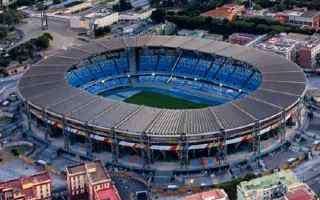
Italy: De Laurentiis strikes again at Stadio Maradona as dispute over its future deepens
Napoli president Aurelio De Laurentiis has once again criticized the condition of the Diego Armando Maradona Stadium. During his speech at the Football Business Forum, the club owner described the venue as a “semicesso,” which can be translated as “half-dump” or “half-toilet.”
-
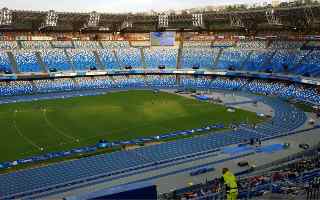
Italy: Naples begins its major chase for Euro 2032
Naples is entering a key phase in the bid to host the 2032 European Championship. The City Council has approved a set of 12 principles that will form the foundation for the redevelopment of Stadio Diego Armando Maradona.
-
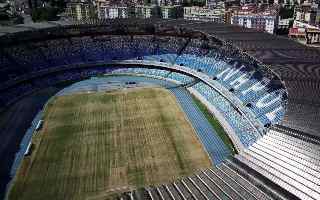
Italy: Could Stadio Maradona be sold to SSC Napoli? The mayor has a plan
In Naples, the debate over the future of Stadio Diego Armando Maradona has reignited. Following Milan’s decision to sell San Siro, mayor Gaetano Manfredi announced that the city is open to a similar approach and ready to work with a private investor — provided a credible proposal is presented.
-
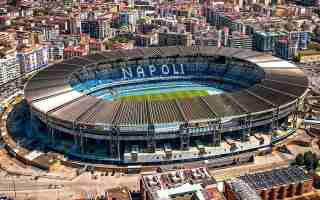
Italy: Race to host Euro 2032. Italy unprepared, several stadiums in play
Preparations for the 2032 UEFA European Championship — which Italy will co-host with Turkey — are intensifying. In a country where memories of the 1990 World Cup are still alive, a kind of “casting call” is underway to select the five Italian stadiums that will ultimately be part of the tournament. Turin is a certainty, while the venues in Florence and Rome are also ready. The battle for the remaining two spots is fierce.
-
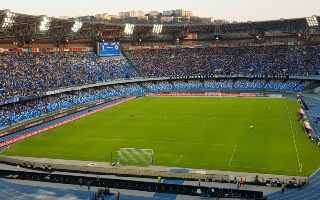
Italy: New SSC Napoli stadium – city raises concerns, decision postponed
The meeting of the ZES Services Conference (Unified Economic Zone), which was set to decide on the validity of the “Feasibility Project for the New SSC Napoli Stadium” in the Caramanico area of Poggioreale, has been postponed from Thursday, September 4, to Wednesday, September 18.
-
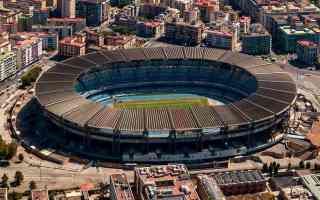
Italy: De Laurentiis wants a new stadium for Napoli before EURO 2032
The authorities in Naples are preparing for the redevelopment of Stadio Maradona as part of the city’s bid to host the UEFA Euro 2032. Mayor Gaetano Manfredi and infrastructure councillor Edoardo Cosenza handed two documents to the UEFA and FIGC delegation.
-
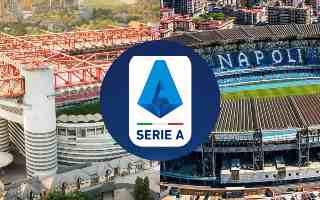
Italy: Attendance at Serie A stadiums in the 2024/2025 season
Serie A is experiencing a resurgence in stadium attendance not seen in decades. In the recently concluded 2024/25 season, Italy’s top division recorded an average crowd of 30,842 spectators per match, making it one of the best-attended campaigns in the league’s history.
-
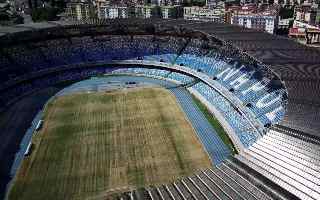
Italy: The long-unused third tier of Stadio Maradona is planned to reopen!
Stadio Maradona is one of the most recognizable sports venues in the country. Although it can accommodate nearly 55,000 spectators, its third tier has been closed to the public for years. However, it seems that soon the stadium may regain its functionality from more than 20 years ago.
-
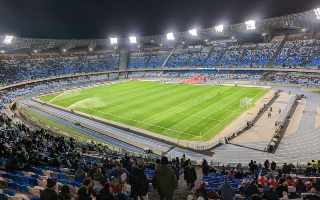
Italy: Opening of the third ring – a chance for the EURO in Naples
The city of Naples is accelerating the process of reopening the third ring of the Stadio Diego Armando Maradona, which was closed 20 years ago due to vibrations that affected nearby buildings.
-
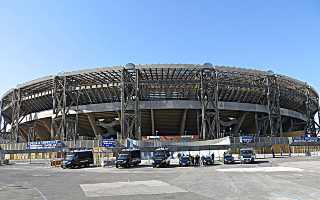
Italy: Stadio Maradona to be modernised or rebuilt
The city council and SSC Napoli are considering whether to renovate the Stadio Diego Armando Maradona or build a new stadium. The discussion is gaining momentum, especially in the context of efforts to modernise Naples' sports infrastructure.
2024
-
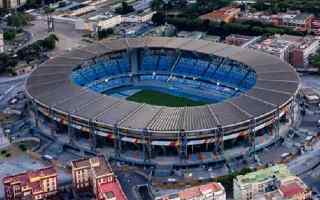
Italy: Stadio Maradona races against time ahead of EURO 2032
Diego Armando Maradona's stadium is facing an upgrade to prepare it for EURO 2032, with a dispute in the background between the city authorities and the Napoli club over the future of the venue. Will a compromise be found in time?
-

Italy: Maradona's daughter banned from stadium named after her father
Dalma Maradona, the oldest daughter of Diego Maradona, reveals her feelings about Naples and the stadium bearing her father's name in an interview with the Italian press. Dalma has struggled for years with restrictions preventing her from entering the sports venue dedicated to the memory of the ‘Pibe de Oro’.
-
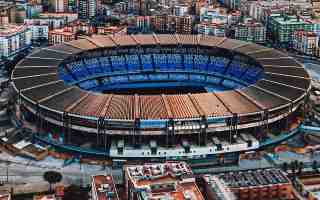
Italy: Three points of view on the future of Napoli stadium
The renovation of Stadio Diego Armando Maradona in Naples is currently the main topic of discussions between Sports Minister Andrea Abodi, Naples Mayor Gaetano Manfredi, and Napoli club president Aurelio De Laurentiis. Even though new problems keep emerging, work is ongoing to find solutions.
-
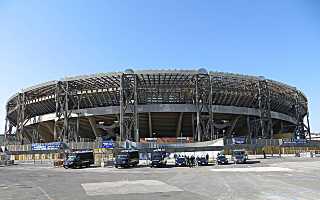
Italy: Plans to upgrade Stadio Maradona overshadowed by dispute over its ownership
Aurelio De Laurentiis has openly expressed his desire to purchase the Maradona stadium, but is facing resistance from the city authorities. Meanwhile, architect Zavanella has confirmed that he will be revealing a redevelopment project to Napoli's president in the near future. Will this vision live to see realisation before the 2032 European Championships?
-

Italy: Why no new stadiums in Italy? Giuseppe Marotta explains
A neglected San Siro and an infrastructure that is not of the highest standard could be among Italy's main problems ahead of the upcoming 2032 European Championship, which they are co-hosting with Turkey. Giuseppe Marotta, in a TV interview, spoke about the situation in Italy, including the state of the stadiums.
-

Italy: Famous architect reveals De Laurentis' plans! Project by the end of the year?
Diego Armando Maradona Stadium in Naples, home of SSC Napoli for years, is in for a landmark redevelopment. Architect Gino Zavanella has provided details of the planned upgrade, which aims to bring the stadium up to modern standards.
-

Italy: Naples prepares for stadium renovation. Will we see project this autumn?
Preparations for the renovation of Stadio Maradona are underway. According to Il Mattino, the stadium will be modernized, likely much earlier than the final deadline imposed by UEFA, which is tied to the 2032 European Championships.
-
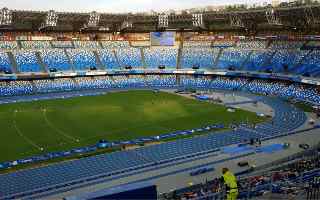
Italy: Alarm ahead of Euro 2032. Will Italy lose hosting of tournament?
There are eight years left until Euro 2032. For most, this is a long time, but for Italian clubs and cities, who need to renovate their facilities, it can be a tense time. All the more so as only three stadiums are ready at the moment. Could the poor condition of the arenas put Italy's hosting of the tournament in risk?
-

Italy: Serie A stadium attendance during 2023/24 season
The Serie A playoffs are now over, so it's time for a stadium recap of the season. And this one surprised with the best attendance in 27 years. 3 teams surpassed the magic barrier of one million spectators, including Inter and AC Milan, who played a fierce Milan derby for the highest attendance, decided by a minimal difference.
-

Italy: New Napoli stadium in volcanic danger zone? Stubborn De Laurentiis
To begin with a short geography lesson. Naples is the capital of the Campania region and, in the area around the Phlegrean Islands, is the caldera of a super-volcano with a diameter of 13 km, lately increasingly ‘scaring’ the inhabitants of the area. Simple? Apparently not for everyone, as president Aurelio De Laurentiis has plans to move the stadium closer to the danger zone site which scientists advise against.

 StadiumDB
StadiumDB